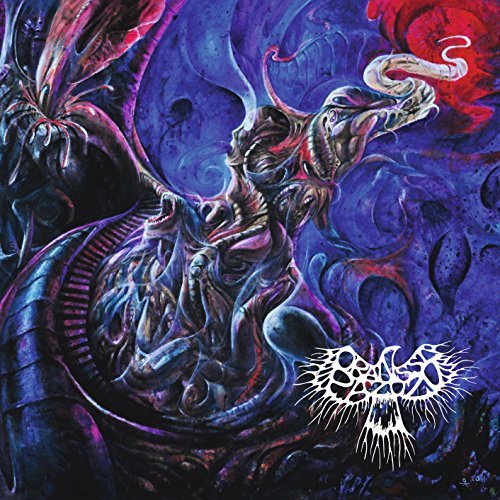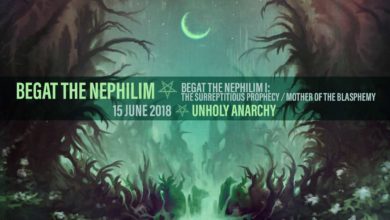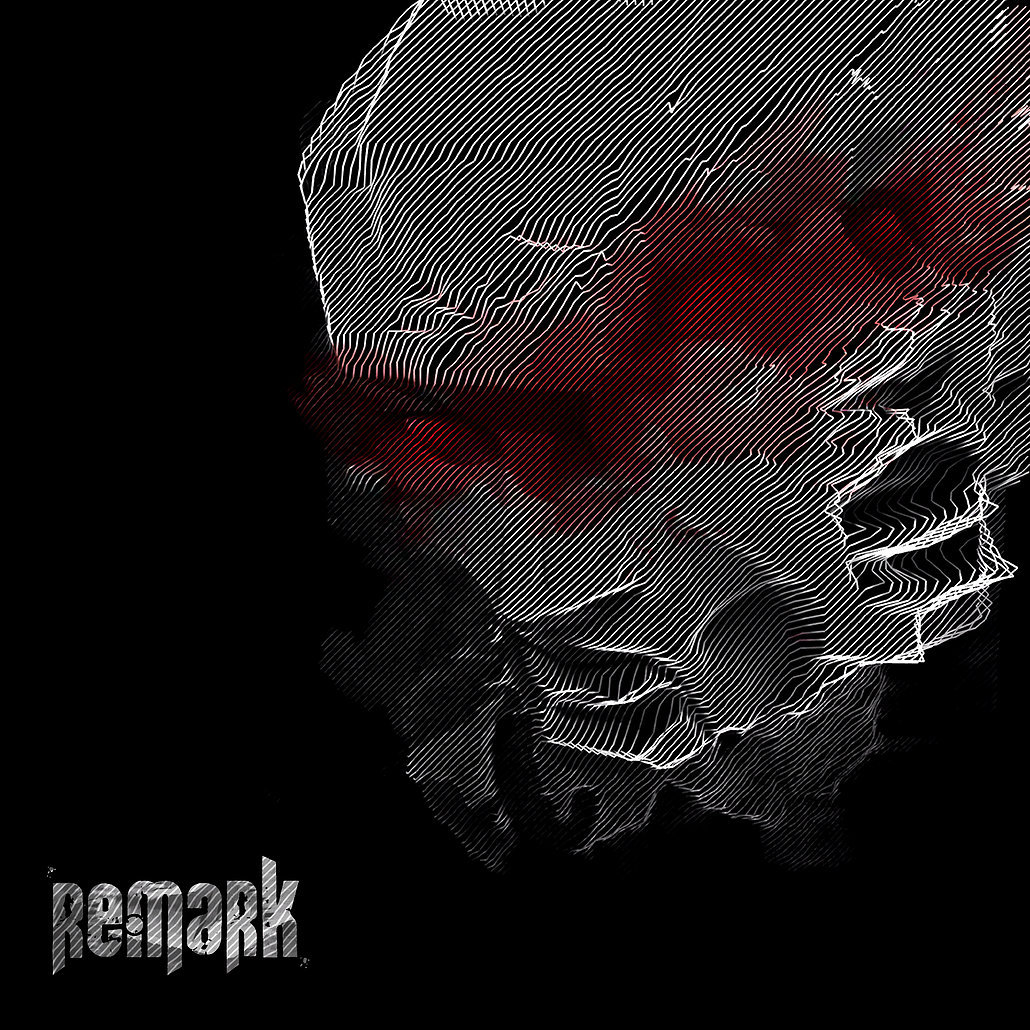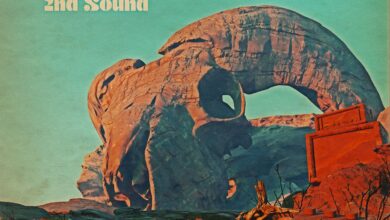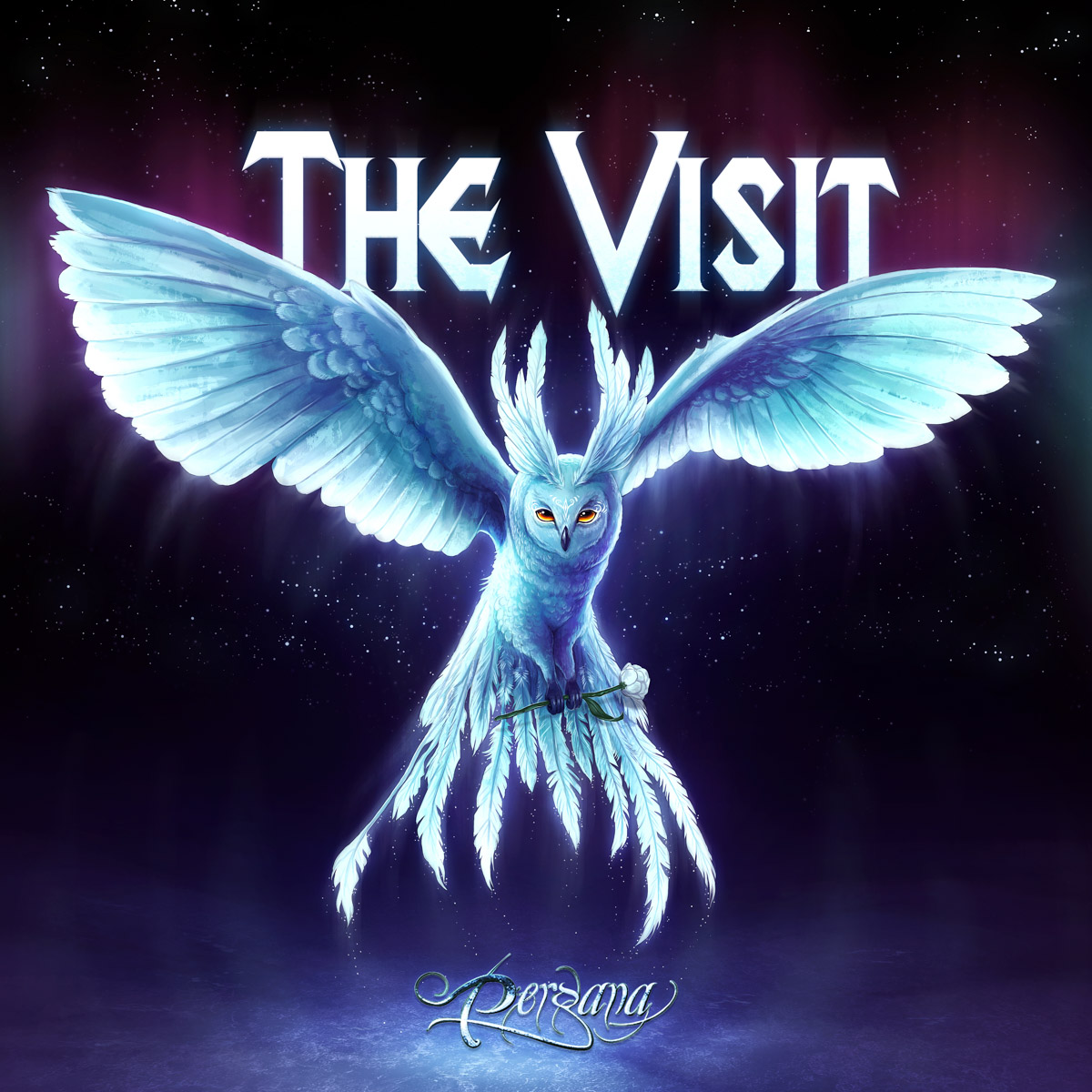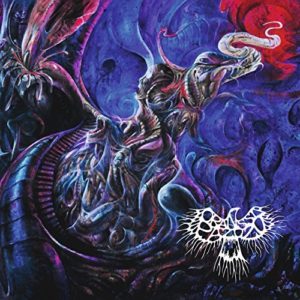 In the extreme music realm, Finland’s Oranssi Pazuzu breathes a vibrant, multi-spectrum color palette onto an otherwise rough-hewn foundation. Based in Tampere, the band’s integration of psychedelic warmth is what individualizes them, solidifying an equally nuanced blend of classic-era rock and black metal. This approach has become increasingly refined in the decade they’ve been together. And regardless of its distinct permutations throughout each album, the quintet’s sound stays relatively familiar and intact.
In the extreme music realm, Finland’s Oranssi Pazuzu breathes a vibrant, multi-spectrum color palette onto an otherwise rough-hewn foundation. Based in Tampere, the band’s integration of psychedelic warmth is what individualizes them, solidifying an equally nuanced blend of classic-era rock and black metal. This approach has become increasingly refined in the decade they’ve been together. And regardless of its distinct permutations throughout each album, the quintet’s sound stays relatively familiar and intact.
To commemorate the re-release of their first three efforts, I’ve decided to revisit their sophomore album, 2011’s Kosmonument. The album was created from a more experimental angle, and, understandably, followed an otherwise mixed reception. While I can agree to a point, it seems to simply be more of a choice that continues the band’s natural progression. I actually consider its textural aesthetic a pacer for the album, rather than something trivially thrown in, so as to provide it its very identity.
“Sienipilvi” (trans: Mushroom Cloud) begins the album with a layer of white noise that builds and surrounds the track. Front man Jun-His then proceeds to make a cool entry. His main riff and vocals are contrastingly grim, yet fit quite well in relation to the track’s instrumental involvement. As the song progresses, the noise starts closely enveloping the track to varietal degrees of prominence. The effect is utilized in such a way that listeners can focus on either of the commanding elements—the white noise and the main riff. Admittedly, this may be a bit rough on the ears at times. However, once the bells enter in the mix around 2:32, the implementation of accompanying elements is much better balanced throughout. Jun-His’s vocals also become more characterized, as they are subdued by wintry reverberation and an additional enharmonic accompaniment. Next up is “Komeetta,” (trans: Comet) its chord progression representing the aftermath of the previous track’s intensity. The song leans more toward alternative riffing, with an upbeat, hooky bassline offsetting a blistering drum rhythm. Once the vocals come in, its general presentation emits a largely gothic feel. I appreciated the stripped-down nature of its halfway point, with the clean guitars from the intro lifted onto a standard drum and bass bed. Later in the track, the overdriven and clean elements combine to create a whirlwind of sorts—a fuzz-laden shell tinged by brisk droplets. On the third track, “Uusi Olento Nousee,” (trans: New Creature Rises) the bullet-speed vibe of its drums suggests a turn toward a more conventional black metal sound. Instead, they compact into a haze, which is solidified by billowing, cloudlike guitars. After a bit, a subtle change in the arrangement gives the guitars a newly nightmarish tone. The drums them stop on a dime to unveil a subsequent doom phase, bringing the tempo shift to a sinister crawl. Traces of growls are registered as part of a larger soundscape, insinuating a beast is stationary, preparing to wreak havoc. From that standpoint, “Luhistuva Aihakki” (trans: Collapsing Timepiece) could worthily represent the damage done, in a type of inexplicable, simultaneous reversal and forwarding of time. The instrumentation seems to be lulled, backward guitars humming on tempo against waves of feedback. Its bassline stands out as particularly noir, while bolstered by complementary ‘tic-toc’ percussion. Both the riffs and drums increase in definition by the midpoint, channeling tones of grunge and rock solid lead melodies. Additional sounds enhance the feeling of impact, gradually shifting from bright and melodic to sharp and dissonant. In the center of the tracks is “Maavaltimo,” which, much like “Komeetta,” sports an upbeat, groove-oriented feel and a constant riff. The rainy percussion creates subtle space within the track as it transitions into the verses. Two distinct components struck me about the mix. It isn’t hindered despite the piling of sparse overdriven guitar bits, and the vocals blend seamlessly into its atmospheric soundscapes. Even when the riffing changes to an uneven time signature later on, the clean guitars follow right on point, thus providing insight into the band’s instrumental fluency.
The true divide in the album’s sections isn’t realized until the sixth track, “Siitorata 100 10100,” which comes off like longform interlude. Coincidentally, I had listened to a plane fly by as I played the song; nuances from both the plane and the white noise were felt equally. The chord sequence that comes in slightly before the 50 second mark feels haunting, as if one’s airborne freedom had mutated into aimlessness. Once a two-note synth line acts as the chord’s foundation, it was as if the song was revealing a dimension amid the clouds—one of a bleak, perturbing limbo. Eventually, the white noise triumphs as the dominant element, possibly having finally signaled an escape route. What follows is a return to the dreamlike chord sequence of “Andromeda.” I found this to be a highlight of the album in that it focuses greatly on its secondary textural influences, which is refreshing. The shoegaze element makes a welcome return, guitars bending against a reverberated waltz of fluttering leads. Underneath, every single note of the bassline is complementary to the structure. A shift in time signature occurs before 3:20, but while maintaining the initial dreamy aesthetic. Jun-His’s vocals spring up in their similarly retained form, although the subtle tinges from the guitars make them appear as if caught in a time warp. Toward the end of the album, “Loputon Tuntematon” (trans: Endless Unknown) and the penultimate, “Kaaos Hallitsee” (trans: Chaos Dominates) comprise similar themes with contrasting extremes. The first one is mostly of direct, knife-like force, while the other places emphasis on sprawling doom riffs and progressively crawling tempos. As both end on relatively harsh notes, the final track, “10” provides a rightful calm. Throughout its eight-minute duration, a soothing pad gently glides the listener in and out of a trance, with varietal emphasis on brisk synth textures. This may seem like a different way to end an extreme metal album, but it ultimately balances all of its signature elements out nonetheless.
Overall, Kosmonument proves a daring stylistic effort by all accounts. It transcends from the conventional black metal ilk, pushing greater emphasis on ambient, heavy alternative elements, and perhaps more colorful elements than what the genre is known for. Although the mixed opinion is justified, Oranssi Pazuzu would go on to produce bigger efforts, which would substantially increase, not to mention better refine, the experience they aim to offer.
http://www.oranssipazuzu.com
http://www.facebook.com/pages/Oranssi-pazuzu/58437793552

